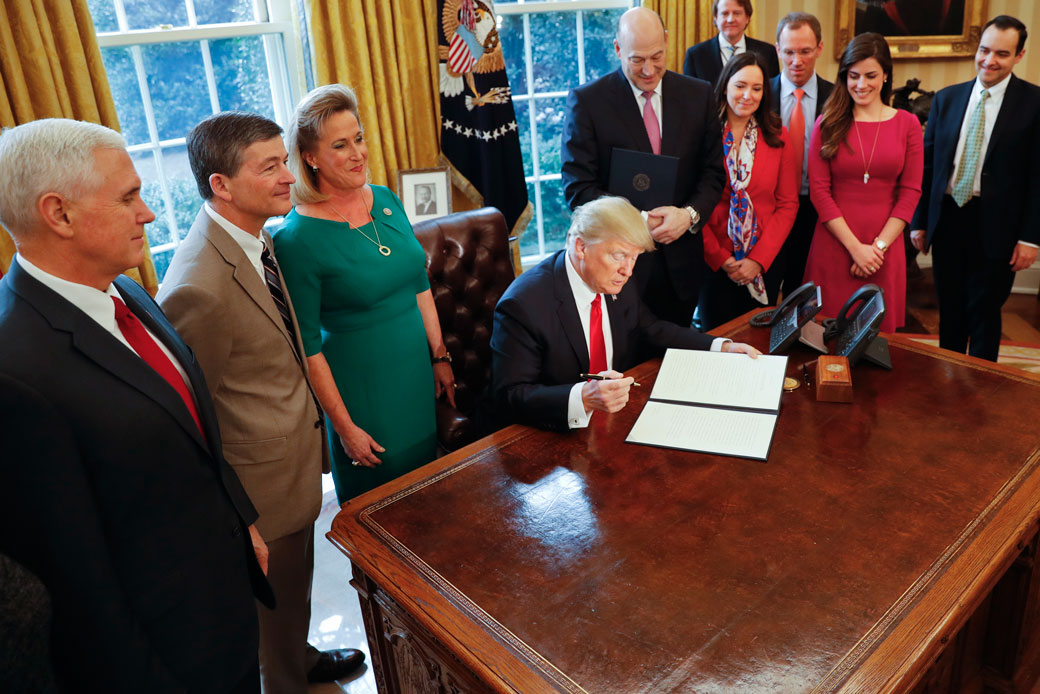Report on UK Retail Export Diversification and Alignment with Sustainable Development Goals
Executive Summary: Impact of Trade Policy on Sustainable Economic Growth
Recent research conducted by ESW and Retail Economics indicates a significant strategic shift among UK retailers in response to global trade uncertainties. This report analyzes these findings through the lens of the United Nations Sustainable Development Goals (SDGs), highlighting challenges and opportunities for fostering resilient economic growth, reducing inequalities, and promoting global partnerships.
The data reveals a critical divergence in strategy between large and small enterprises, posing a risk to the achievement of SDG 8 (Decent Work and Economic Growth) and SDG 10 (Reduced Inequalities). The trend towards protectionism directly challenges the principles of SDG 17 (Partnerships for the Goals), necessitating innovative approaches to maintain stable international trade.
Key Findings: Market Diversification and Strategic Realignment
The core findings from the “Rethinking Reach” report underscore a proactive response by UK exporters to tariff instability, particularly concerning the US market.
- Market Diversification: 76% of UK exporters are actively pursuing markets beyond the United States, which has traditionally been the largest non-EU export destination. This strategic pivot is a direct reaction to protectionist trade policies that threaten stable revenue streams and long-term growth, impacting progress towards SDG 8.
- Strategic Innovation: Larger UK retailers are fundamentally redesigning their global expansion strategies. This move towards more resilient and diversified business models aligns with the objectives of SDG 9 (Industry, Innovation, and Infrastructure), as companies innovate to navigate a volatile global economic landscape.
Analysis of Operational Gaps and SDG Implications
A significant disparity exists in the preparedness levels between large and small retailers, creating a vulnerability that could undermine inclusive economic growth.
The SME Resilience Gap
The report highlights a concerning operational deficiency among smaller businesses, which has direct implications for several SDGs.
- Lack of Formal Planning: A stark 71% of small UK retailers admit to having no formal contingency plan for sudden trade-policy shocks. This lack of preparedness threatens their financial stability and the livelihoods they support, creating a barrier to achieving SDG 8 (Decent Work and Economic Growth).
- Increased Inequality: The gap between well-prepared large corporations and unprepared Small and Medium-sized Enterprises (SMEs) exacerbates economic disparities. This trend runs counter to the aims of SDG 10 (Reduced Inequalities) by concentrating resilience and growth opportunities within larger entities.
- Weakened Global Partnerships: The underlying cause—protectionist trade policies—undermines the collaborative spirit essential for SDG 17 (Partnerships for the Goals). A retreat from established trade relationships without robust, inclusive alternatives can lead to economic isolation and instability, particularly for smaller players in the global market.
Analysis of Sustainable Development Goals in the Article
1. Which SDGs are addressed or connected to the issues highlighted in the article?
-
SDG 8: Decent Work and Economic Growth
- The article directly discusses economic activity, specifically the export strategies of UK retailers. The “tariff uncertainty” and “protectionist trade policies” mentioned are significant threats to sustained economic growth for these businesses. The diversification of markets is a strategy to maintain growth and stability.
-
SDG 9: Industry, Innovation and Infrastructure
- The article highlights the need for industries to be resilient and innovative. Larger retailers are “radically re-drawing their global growth playbooks,” which is a form of strategic innovation. The mention that “71% of small UK retailers admit they have no formal plan for sudden trade-policy shocks” points to a lack of resilient planning and infrastructure within this segment of the industry.
-
SDG 17: Partnerships for the Goals
- This goal focuses on strengthening the means of implementation and revitalizing the global partnership for sustainable development, which includes promoting a universal, rules-based, and open trading system. The article’s central theme of “protectionist trade policies” and “tariff uncertainty” directly relates to the challenges facing global trade partnerships.
2. What specific targets under those SDGs can be identified based on the article’s content?
-
Target 8.2: Achieve higher levels of economic productivity through diversification, technological upgrading and innovation…
- The article explicitly states that “76% of UK exporters are now actively diversifying beyond the US.” This diversification is a direct strategy to achieve economic productivity and resilience in the face of trade policy shifts.
-
Target 8.3: Promote development-oriented policies that support productive activities… and the growth of micro-, small- and medium-sized enterprises…
- The article highlights a significant vulnerability among small enterprises, noting that “71% of small UK retailers admit they have no formal plan for sudden trade-policy shocks.” This points to a gap in support and planning for small businesses, which this target aims to address.
-
Target 17.10: Promote a universal, rules-based, open, non-discriminatory and equitable multilateral trading system…
- The issues described in the article, such as “tariff uncertainty” and “protectionist trade policies,” are direct challenges to the principles of an open and predictable trading system that this target aims to promote.
3. Are there any indicators mentioned or implied in the article that can be used to measure progress towards the identified targets?
-
Indicator for Target 8.2 (Diversification):
- The article provides a direct quantitative indicator: “Percentage of exporters diversifying their markets.” The specific data point mentioned is that 76% of UK exporters are diversifying beyond the US market.
-
Indicator for Target 8.3 (Small Enterprise Resilience):
- A clear indicator of vulnerability is provided: “Percentage of small retailers without a formal plan for trade-policy shocks.” The article states this figure is 71%, which can be used as a baseline to measure improvement in the resilience of small enterprises.
-
Indicator for Target 17.10 (Trade System Stability):
- While not a formal UN indicator, the article implies a qualitative indicator: “The existence of protectionist trade policies and tariff uncertainty.” The presence of these factors, as mentioned in the article, indicates a negative trend away from the goal of an open and stable trading system.
Summary Table
4. SDGs, Targets, and Indicators
| SDGs | Targets | Indicators Identified in the Article |
|---|---|---|
| SDG 8: Decent Work and Economic Growth | Target 8.2: Achieve higher levels of economic productivity through diversification… | Percentage of exporters diversifying beyond their primary market (Stated as 76% of UK exporters). |
| SDG 8: Decent Work and Economic Growth | Target 8.3: Promote… growth of micro-, small- and medium-sized enterprises… | Percentage of small retailers with no formal plan for trade-policy shocks (Stated as 71%). |
| SDG 17: Partnerships for the Goals | Target 17.10: Promote a universal, rules-based, open… multilateral trading system… | The presence of “protectionist trade policies” and “tariff uncertainty” as a qualitative measure of challenges to the system. |
Source: foodmarket.com







